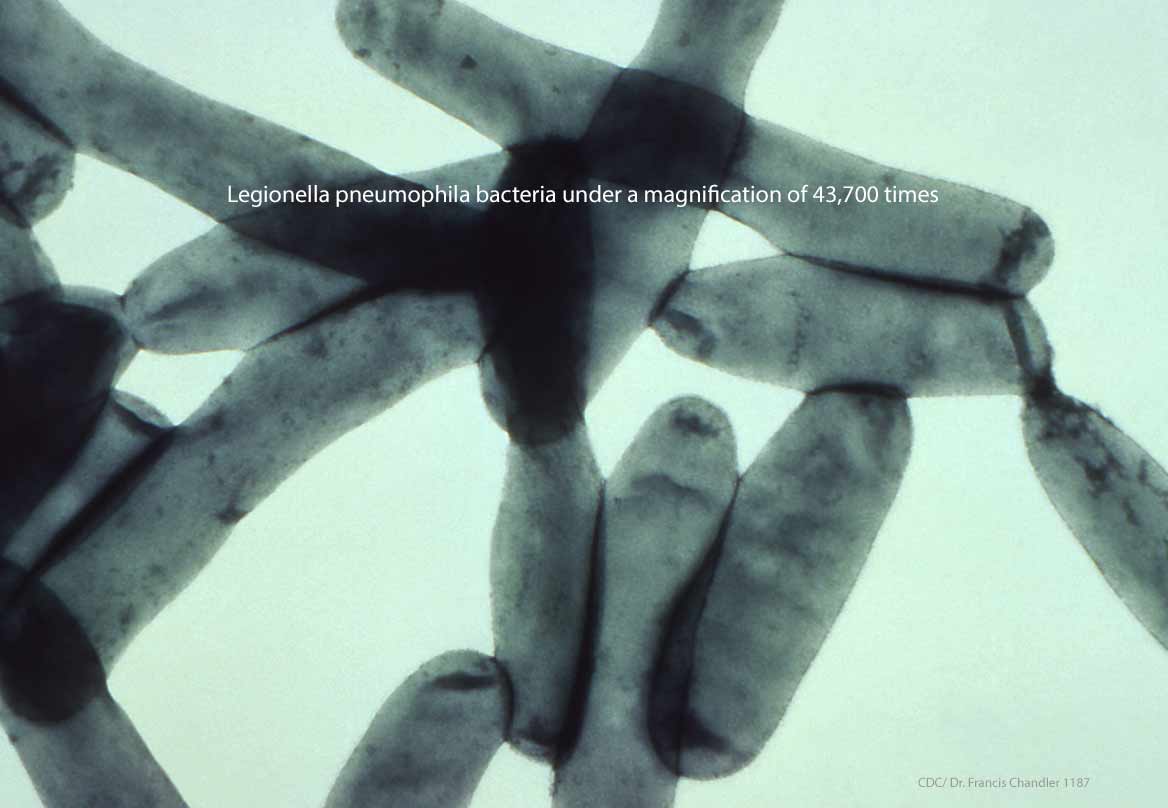The state of Illinois is still suffering from sticker shock, no doubt, upon learning that it is going to cost $2.3 million to remediate water systems contaminated by the Legionella bacteria at its largest veterans nursing home, the Illinois Veterans’ Home in Quincy, IL.
We are currently representing victims of the Quincy Legionnaires’ Disease outbreak, which killed 12 residents and sickened more than 50 others in late August. The incident served as a powerful – but perhaps not powerful enough – call for action for Illinois State Senator John Sullivan (D-Rushville) and U.S. Senator Dick Durbin (D-Ill) and Illinois Department of Veterans Affairs officials; a temporary water treatment system is currently being installed at the 129-year old facility as a stopgap measure until a permanent water treatment plant can be completed.
While Durbin has issued a request for a formal investigation into the Quincy Legionnaires’ Disease outbreak by the Department of Veterans Affairs, an official response is still forthcoming. Neither will proactive water treatment system calibrations be performed at the state’s other veterans homes in Manteno, LaSalle, or Anna. As Illinois Department of Veterans Affairs spokesman Ryan Yantis told news sources, “We will address each home’s needs based on the physical requirement for each facility if a problem is discovered or if capital funds are appropriated.”
Yantis’ stance is representative of the standard protocol utilized to control the spread of Legionnaires’ Disease in hospital facilities, unfortunately. At this point in time, Centers for Disease Control (CDC) recommends that environmental cultures of facility drinking water be conducted only after diagnosis of one to two Legionnaires’ Disease cases (the exception to this rule being hospitals performing transplants, where proactive water system culturing is encouraged). Thus, hospitals often only begin monitoring their water systems and cooling towers for the potentially fatal Legionella bacteria after two or more cases of LD have been contracted by patients who have been at the facility a minimum of 10 continuous days.
What is telling, though, is that Yantis’ statement is not representative of the Department of Veterans Affairs’ own Legionnaires’ Disease prevention and control policies, as expressed in VHA Directive 1061 (first formulated in 2008 and most recently updated and reissued on August 13, 2014).
VHA Directive 1061, compiled by the “VA Legionella Expert Work Group, a multidisciplinary team consisting of subject matter experts from transplant centers, healthcare engineering, infectious diseases, pathology and laboratory medicine, infection prevention and control, construction and facilities management, public health, occupational safety and health, and healthcare operations,” emphasizes the need to implement LD prevention programs that to go well beyond CDC guidelines:
“In January 2014, the CDC National Center for Immunization and Respiratory Diseases released an updated Legionellosis Case Report form, including guidance on determining if the case was definitely or possibly associated with a healthcare exposure. VHA Directive 1061 focuses on primary prevention activities for buildings where patients, residents or visitors stay overnight; in the event of a LD case suspected to be associated with any VHA building, case investigation and consideration of secondary prevention activities would be appropriate.”
To this end, the Directive provides detailed steps and a timeframe for implementation of comprehensive LD prevention programs across all VA facilities; it mandates that each of its Medical Facility Directors establish “a medical facility HCA LD prevention policy which specifies responsibilities and incorporates written HCA LD prevention plans no later than February 2, 2015.”
It also emphasizes the use of ongoing “engineering controls” to pinpoint the presence of the Legionella bacteria in systems:
“Given the various factors and complexities associated with LD (e.g., host susceptibility, pathogen virulence, water distribution system configurations and conditions), 100% prevention of LD is likely not possible. However, prevention and control practices can be implemented to reduce the risk of exposing people to Legionella in building water distribution systems. The Legionella prevention activities in this Directive involve assessing risks, monitoring water quality and implementation of commensurate engineering controls to limit the growth of Legionella. Use of engineering controls to limit Legionella growth includes ongoing monitoring of implemented controls, validating that the control measures are effective at inhibiting Legionella growth, and modifying implementation or type(s), as necessary. By focusing on engineering controls, this Directive can be viewed as a horizontal intervention that can improve the overall microbiological quality of facility water, not just the inhibition of Legionella growth.”
Given the VA’s creation and advocacy, over the last seven years, of comprehensive Legionnaires’ Disease prevention and control practices – a program far more extensive and proactive than most hospital systems have adopted even today – the question arises, “Did hospital officials at Quincy and the other VA Centers where LD cases have occurred in the last few years (including repeated cases at the H.J. Heinz Veterans Affairs (VA) hospital campus in O’Hara, PA, a nearby VA hospital in Oakland, PA, and the VA hospital in Brockton, MA) observe the protocols established by VA Directive 1061?”
Our legal investigation of this and other questions arising from these increasingly frequent occurrences of legionellosis among VA center patients and personnel is ongoing.
